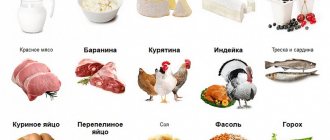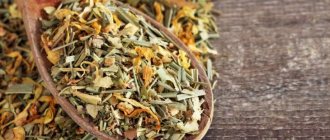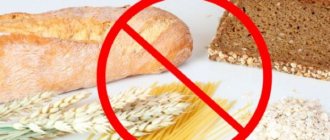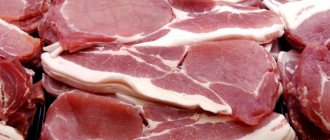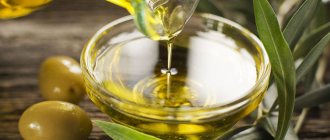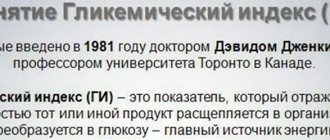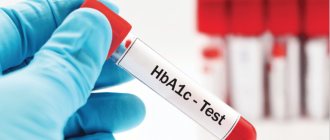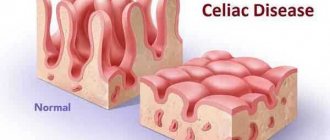Hemoglobin is a special blood protein found in red blood cells. Performs a vital function. Thanks to it, cells and tissues are saturated with oxygen, and gases and substances are exchanged in the body. Therefore, the importance of hemoglobin cannot be overestimated. If its level drops, health problems occur. This could be due to various reasons. So it is necessary to maintain a normal protein level and know ways to restore it.
General rules
Hemoglobin , which is part of blood cells ( erythrocytes ), is a protein (globin) that contains iron (heme).
Its main function is the transfer of oxygen from the lungs to the cells of organs and tissues, as well as the binding and removal of carbon dioxide into the lungs. The hemoglobin level is essentially an indicator of the amount of oxygen carried. Normally, hemoglobin levels in men vary between 130-160 g/1 l and 120-140 g/1 l of blood in women. The level of hemoglobin can change under the influence of natural processes, as well as in the presence of disorders in various organs and systems of the human body.
Elevated hemoglobin is not an independent disease. Rather, it is a nonspecific symptom that occurs in various conditions/diseases, in particular:
- Increased production of the hormone erythropoietin , which stimulates the formation of new red blood cells.
- Cardiovascular failure/heart disease.
- Acute/chronic respiratory failure.
- Fibrous lung diseases.
- Due to blood transfusion.
- For oncological diseases.
- Diabetes mellitus.
- Acute intestinal obstruction.
- Excessive levels of vitamin B12 / folic acid .
- Dehydration.
- In chronic smokers.
- Taking anabolic steroids .
- Living/working in a rarefied atmosphere (mountainous areas).
- Increased aerobic physical activity (running, snowboarding, cycling, skiing).
Clinical symptoms of high hemoglobin levels include complaints of increased fatigue/ drowsiness during the day, pale/anemic skin, and decreased appetite. However, the presence of elevated hemoglobin can only be confirmed using data from a general clinical blood test.
Increased hemoglobin is one of the reasons for the development of high blood viscosity syndrome, which leads to a change in the rheological properties of the blood and provokes the occurrence of thrombosis with all the inherent risks (ischemia of certain tissue areas, thrombophlebitis , attack , stroke / pulmonary embolism ). At the same time, the transport function of the blood is also disrupted (transportation of respiratory gases, nutrients, hormones ).
To reduce hemoglobin, an integrated approach is used, including taking antiplatelet drugs, diet correction, hirudotherapy (use of leeches), and erythrocytopheresis . A diet for high hemoglobin is based on limiting foods containing heme iron , which is part of hemoglobin, is well absorbed in the body and is found in foods of animal origin.
Foods high in heme iron include: veal/beef/pork liver, chicken liver, beef kidneys, oysters, canned food (sprats, sardines), blood/liver sausage, various types of meat, mussels, beef tongue, butter, chicken yolk .
Accordingly, nutrition with increased hemoglobin involves the exclusion/maximum limitation of such products, and preference in the diet should be given to products containing non-heme iron, contained in plant foods in the form of 2-3 valent iron with low digestibility.
It is recommended to limit the consumption of sweets, since hemoglobin, when combined with glucose, forms the so-called glycosylated hemoglobin , which is not able to perform transport functions, as well as alcohol-containing drinks. It is not recommended to take vitamin C , which increases the absorption of iron, so it is recommended to exclude citrus fruits, rosehip decoction, compotes/jelly with the addition of ascorbic acid from the diet.
Strong tea and products containing tannins effectively suppress the process of iron absorption. Also, the absorption process of iron is worsened by: cocoa, chocolate, egg yolk. It is important to include in your diet foods rich in calcium (fermented milk products), phosphorus and zinc, which reduce the absorption of hemoglobin.
A diet for high hemoglobin should include foods such as whole grain bread, dietary poultry/rabbit meat, sprouted wheat, various cereals (except buckwheat), beans, olive/linseed oil, sea fish, tofu, seaweed, nuts, spinach, apricots, grapes.
It is useful to include foods containing salicylates in your diet (strawberries, cherries, gooseberries, cranberries, raspberries, prunes, apples, ginger, red peppers, white/red currants, cucumbers, onions, garlic, tomatoes, beets, dry red wine, dark grapes) .
It is extremely important to consume at least 2 liters/day of free fluid. Also, it is necessary to take into account that long-term culinary processing of products contributes to the destruction of iron, so preference should be given to such cooking methods as boiling and stewing.
In case of severe hyperviscosity syndrome caused by increased hemoglobin , it is recommended to take antiplatelet drugs ( Aspirin , Trental , Heparin , Clopidogrel and others).
Excess weight is considered as a factor predisposing to increased blood clotting. In this regard, it is important to reduce the calorie content of food (1700 kcal/day) by eliminating refined carbohydrates (sugar, confectionery, jam, candy, etc.).
When should hemoglobin be reduced?
In most cases, an increase in hemoglobin levels in adults is complemented by an increase in blood viscosity due to impaired water-salt metabolism. And thick blood leads to an increased risk of blood clots and plaques, and coagulation also increases. All this can be supplemented:
- hypertension (increased blood pressure to a critical level);
- thrombosis (if the blood flow slows down to the point where the blood literally coagulates in some vessels);
- heart attack (if thrombosis affects the heart muscle or the blood vessels that supply it);
- stroke (if thrombosis affects the circulatory system of the brain);
- atherosclerosis (when cholesterol plaques form on the walls of blood vessels, thereby impeding normal blood flow).
At the same time, an increase in hemoglobin may indicate pathologies in metabolic processes when the body receives insufficient amounts of oxygen and other micronutrients.
In some cases, elevated hemoglobin is normal. This happens, for example, among residents of mountainous regions, where the oxygen content in the air is significantly lower.
Also, hemoglobin and red blood cells naturally increase in smokers, since they inhale fumes while smoking. It, in turn, creates inseparable compounds with hemoglobin, thereby deactivating the molecule. In these cases, the hemoglobin level should not be reduced, since the body will experience constant oxygen starvation.
Hemoglobin also often increases in the summer or during regular physical activity, when the body actively loses water and minerals (along with sweat). But normalizing hemoglobin concentration in this case is quite simple - you need to drink as much water as possible (in summer - from 3 liters or more).
Authorized Products
A diet for high hemoglobin includes the following in the diet:
- Dietary poultry (turkey, chicken) and rabbit, mainly boiled/baked.
- Vegetable soups with the addition of a small amount of cereals/vegetables.
- Vegetable oils (sesame, linseed, olive, mustard, rapeseed, nut) cold pressed.
- Rye bread and containing bran, flax seed, sesame.
- Fermented milk products with low fat content. Sour cream/cream may be added in small quantities to prepared dishes.
- Chicken eggs, hard-boiled/soft-boiled.
- Porridge (oatmeal, wheat, corn, pearl barley), cooked in water, brown rice.
- Vegetables/fruits containing little vitamin C (tomatoes, red peppers, cucumbers, grapes, cherries, raspberries, strawberries) and vegetables containing salicylates (beets, onions, garlic, gooseberries, cranberries, cherries, apples, prunes). Potatoes in skin and baked.
- Herbal teas (hazel leaves, licorice, sweet clover, hawthorn, sage), ginger tea, coffee, black/green tea, still water.
Table of permitted products
| Proteins, g | Fats, g | Carbohydrates, g | Calories, kcal | |
Vegetables and greens | ||||
| eggplant | 1,2 | 0,1 | 4,5 | 24 |
| zucchini | 0,6 | 0,3 | 4,6 | 24 |
| bulb onions | 1,4 | 0,0 | 10,4 | 41 |
| carrot | 1,3 | 0,1 | 6,9 | 32 |
| cucumbers | 0,8 | 0,1 | 2,8 | 15 |
| squash | 0,6 | 0,1 | 4,3 | 19 |
| salad pepper | 1,3 | 0,0 | 5,3 | 27 |
| beet | 1,5 | 0,1 | 8,8 | 40 |
| tomatoes | 0,6 | 0,2 | 4,2 | 20 |
| Jerusalem artichoke | 2,1 | 0,1 | 12,8 | 61 |
| pumpkin | 1,3 | 0,3 | 7,7 | 28 |
| garlic | 6,5 | 0,5 | 29,9 | 143 |
Fruits | ||||
| pears | 0,4 | 0,3 | 10,9 | 42 |
| melon | 0,6 | 0,3 | 7,4 | 33 |
| kiwi | 1,0 | 0,6 | 10,3 | 48 |
| nectarine | 0,9 | 0,2 | 11,8 | 48 |
| peaches | 0,9 | 0,1 | 11,3 | 46 |
| apples | 0,4 | 0,4 | 9,8 | 47 |
Berries | ||||
| grape | 0,6 | 0,2 | 16,8 | 65 |
| gooseberry | 0,7 | 0,2 | 12,0 | 43 |
Nuts and dried fruits | ||||
| sesame | 19,4 | 48,7 | 12,2 | 565 |
| flax seeds | 18,3 | 42,2 | 28,9 | 534 |
| fenugreek seeds | 23,0 | 6,4 | 58,3 | 323 |
| sunflower seeds | 20,7 | 52,9 | 3,4 | 578 |
| prunes | 2,3 | 0,7 | 57,5 | 231 |
Cereals and porridges | ||||
| oat groats | 12,3 | 6,1 | 59,5 | 342 |
| cereals | 11,9 | 7,2 | 69,3 | 366 |
| millet cereal | 11,5 | 3,3 | 69,3 | 348 |
| barley grits | 10,4 | 1,3 | 66,3 | 324 |
Chocolate | ||||
| chocolate | 5,4 | 35,3 | 56,5 | 544 |
Raw materials and seasonings | ||||
| honey | 0,8 | 0,0 | 81,5 | 329 |
Dairy | ||||
| skim milk | 2,0 | 0,1 | 4,8 | 31 |
| natural yogurt 2% | 4,3 | 2,0 | 6,2 | 60 |
Cheeses and cottage cheese | ||||
| cottage cheese 0.6% (low fat) | 18,0 | 0,6 | 1,8 | 88 |
| curd tofu | 8,1 | 4,2 | 0,6 | 73 |
Meat products | ||||
| beef | 18,9 | 19,4 | 0,0 | 187 |
| rabbit | 21,0 | 8,0 | 0,0 | 156 |
Bird | ||||
| chicken fillet | 23,1 | 1,2 | 0,0 | 110 |
| turkey | 19,2 | 0,7 | 0,0 | 84 |
Fish and seafood | ||||
| fish | 18,5 | 4,9 | 0,0 | 136 |
| squid | 21,2 | 2,8 | 2,0 | 122 |
| seaweed | 0,8 | 5,1 | 0,0 | 49 |
Oils and fats | ||||
| linseed oil | 0,0 | 99,8 | 0,0 | 898 |
| olive oil | 0,0 | 99,8 | 0,0 | 898 |
Non-alcoholic drinks | ||||
| mineral water | 0,0 | 0,0 | 0,0 | — |
| instant coffee dry | 15,0 | 3,5 | 0,0 | 94 |
| green tea | 0,0 | 0,0 | 0,0 | — |
| black tea | 20,0 | 5,1 | 6,9 | 152 |
Juices and compotes | ||||
| Cherry juice | 0,7 | 0,0 | 10,2 | 47 |
| grapefruit juice | 0,9 | 0,2 | 6,5 | 30 |
| strawberry juice | 0,0 | 0,0 | 10,0 | 41 |
| cranberry juice | 0,4 | 0,3 | 11,0 | 46 |
| raspberry juice | 0,8 | 0,0 | 24,7 | 100 |
| * data is per 100 g of product | ||||
What is the normal hemoglobin level for men and women?
Depending on age and gender, the norm varies greatly throughout life. There is no one number that fits everyone. At birth, the indicators are very high, but after a year the child’s numbers decrease significantly, only to gradually increase again during the period of growing up. During pregnancy in women, the permissible limit is reduced due to the nutrition of the fetus with iron. Male and female norms are slightly different due to different intensity of activity and oxygen demand. Hemoglobin norms can be considered in more detail in the table.
| № | Age, gender | Normal indicators (g/l) |
| 1 | Newborn | 115-180 |
| 2 | Child 2-6 months. | 95-140 |
| 3 | Child up to 12 months. | 105-150 |
| 4 | Child from 1 to 12 years old | 105-150 |
| 5 | Girls 12-18 years old | 112-152 |
| 6 | Boys 12-18 years old | 120-160 |
| 7 | Women 18-65 years old | 120-155 |
| 8 | Pregnant | 110-140 |
| 9 | Men 18-65 years old | 130-160 |
| 10 | Women over 50 years old | 120-157 |
| 11 | Men over 50 years old | 125-165 |
On a note!
- Low hemoglobin in the blood: causes and consequences, what to do, how to increase⚡
The concept of deviation from the norm may differ among different doctors. Some experts allow up to 20 g/l, from the upper limit, others consider an increase of just a couple of units to be an indication for starting treatment.
Fully or partially limited products
A diet for high hemoglobin includes excluding/limiting the use of:
- Meat/fish broths, fried foods, saturated fats (pork, lamb, beef, cooking fats).
- Fatty meats of domestic waterfowl (duck, goose), sausages, smoked meats;
- Fatty dairy/fermented milk products (butter, cottage cheese, sour cream, cheese, cream).
- White fresh bread and bakery products.
- Sugar, sweet pastries, cream cakes, puff pastry products, cakes.
- Legumes of all types.
- Offal - liver (beef/pork), kidney, brain.
- Various types of cabbage, radishes, watercress, turnips, radishes.
- Garden herbs (parsley, dill, basil, coriander).
- Light grape and pomegranate juice.
Table of prohibited products
| Proteins, g | Fats, g | Carbohydrates, g | Calories, kcal | |
Vegetables and greens | ||||
| greenery | 2,6 | 0,4 | 5,2 | 36 |
| beans | 6,0 | 0,1 | 8,5 | 57 |
| cabbage | 1,8 | 0,1 | 4,7 | 27 |
| broccoli | 3,0 | 0,4 | 5,2 | 28 |
| boiled cauliflower | 1,8 | 0,3 | 4,0 | 29 |
| parsley | 3,7 | 0,4 | 7,6 | 47 |
| radish | 1,2 | 0,1 | 3,4 | 19 |
| white radish | 1,4 | 0,0 | 4,1 | 21 |
| red radish | 1,2 | 0,1 | 3,4 | 20 |
| black radish | 1,9 | 0,2 | 6,7 | 35 |
| salad | 1,2 | 0,3 | 1,3 | 12 |
| celery | 0,9 | 0,1 | 2,1 | 12 |
| soybeans | 34,9 | 17,3 | 17,3 | 381 |
| asparagus | 1,9 | 0,1 | 3,1 | 20 |
| dill | 2,5 | 0,5 | 6,3 | 38 |
| beans | 7,8 | 0,5 | 21,5 | 123 |
| lentils | 24,0 | 1,5 | 42,7 | 284 |
| spinach | 2,9 | 0,3 | 2,0 | 22 |
| sorrel | 1,5 | 0,3 | 2,9 | 19 |
Fruits | ||||
| avocado | 2,0 | 20,0 | 7,4 | 208 |
| oranges | 0,9 | 0,2 | 8,1 | 36 |
| bananas | 1,5 | 0,2 | 21,8 | 95 |
| pomegranate | 0,9 | 0,0 | 13,9 | 52 |
| grapefruit | 0,7 | 0,2 | 6,5 | 29 |
| lemons | 0,9 | 0,1 | 3,0 | 16 |
| mango | 0,5 | 0,3 | 11,5 | 67 |
| tangerines | 0,8 | 0,2 | 7,5 | 33 |
| mulberry | 0,7 | 0,0 | 13,6 | 52 |
Berries | ||||
| cowberry | 0,7 | 0,5 | 9,6 | 43 |
| blueberry | 1,0 | 0,0 | 8,2 | 35 |
| blackberry | 2,0 | 0,0 | 6,4 | 31 |
| viburnum | 0,0 | 0,0 | 7,0 | 26 |
| cranberry | 0,5 | 0,0 | 6,8 | 26 |
| chokeberry | 1,5 | 0,2 | 10,9 | 55 |
Mushrooms | ||||
| mushrooms | 3,5 | 2,0 | 2,5 | 30 |
Cereals and porridges | ||||
| buckwheat (kernel) | 12,6 | 3,3 | 62,1 | 313 |
| semolina | 10,3 | 1,0 | 73,3 | 328 |
| white rice | 6,7 | 0,7 | 78,9 | 344 |
Flour and pasta | ||||
| pasta | 10,4 | 1,1 | 69,7 | 337 |
Confectionery | ||||
| jam | 0,3 | 0,2 | 63,0 | 263 |
| jam | 0,3 | 0,1 | 56,0 | 238 |
| candies | 4,3 | 19,8 | 67,5 | 453 |
| pastry cream | 0,2 | 26,0 | 16,5 | 300 |
| cookie | 7,5 | 11,8 | 74,9 | 417 |
Ice cream | ||||
| ice cream | 3,7 | 6,9 | 22,1 | 189 |
Cakes | ||||
| cake | 4,4 | 23,4 | 45,2 | 407 |
Raw materials and seasonings | ||||
| mustard | 5,7 | 6,4 | 22,0 | 162 |
| mayonnaise | 2,4 | 67,0 | 3,9 | 627 |
Dairy | ||||
| milk 3.6% | 2,8 | 3,6 | 4,7 | 62 |
| milk 4.5% | 3,1 | 4,5 | 4,7 | 72 |
| cream | 2,8 | 20,0 | 3,7 | 205 |
| sour cream 25% (classic) | 2,6 | 25,0 | 2,5 | 248 |
Cheeses and cottage cheese | ||||
| cheese | 24,1 | 29,5 | 0,3 | 363 |
| cottage cheese 11% | 16,0 | 11,0 | 1,0 | 170 |
| cottage cheese 18% (fat) | 14,0 | 18,0 | 2,8 | 232 |
Meat products | ||||
| pork | 16,0 | 21,6 | 0,0 | 259 |
| pork liver | 18,8 | 3,6 | 0,0 | 108 |
| pork kidneys | 13,0 | 3,1 | 0,0 | 80 |
| pork fat | 1,4 | 92,8 | 0,0 | 841 |
| salo | 2,4 | 89,0 | 0,0 | 797 |
| beef liver | 17,4 | 3,1 | 0,0 | 98 |
| beef kidneys | 12,5 | 1,8 | 0,0 | 66 |
| beef brains | 9,5 | 9,5 | 0,0 | 124 |
Sausages | ||||
| smoked sausage | 16,2 | 44,6 | 0,0 | 466 |
| smoked sausage | 9,9 | 63,2 | 0,3 | 608 |
| sausages | 10,1 | 31,6 | 1,9 | 332 |
| sausages | 12,3 | 25,3 | 0,0 | 277 |
Bird | ||||
| smoked chicken | 27,5 | 8,2 | 0,0 | 184 |
| duck | 16,5 | 61,2 | 0,0 | 346 |
| smoked duck | 19,0 | 28,4 | 0,0 | 337 |
| goose | 16,1 | 33,3 | 0,0 | 364 |
Fish and seafood | ||||
| smoked fish | 26,8 | 9,9 | 0,0 | 196 |
| salted fish | 19,2 | 2,0 | 0,0 | 190 |
| Red caviar | 32,0 | 15,0 | 0,0 | 263 |
| black caviar | 28,0 | 9,7 | 0,0 | 203 |
| mussels | 9,1 | 1,5 | 0,0 | 50 |
| canned fish | 17,5 | 2,0 | 0,0 | 88 |
Oils and fats | ||||
| butter | 0,5 | 82,5 | 0,8 | 748 |
| animal fat | 0,0 | 99,7 | 0,0 | 897 |
| cooking fat | 0,0 | 99,7 | 0,0 | 897 |
| * data is per 100 g of product | ||||
Advantages and disadvantages
| pros | Minuses |
|
|
Drug therapy
You cannot use medications to lower hemoglobin levels on your own. It is allowed to take medications prescribed by a doctor. The doctor, having found out the cause of the increased concentration of iron-containing protein, selects the necessary medications.
Blood thinners will not help if the high protein concentration is caused by underlying medical conditions. The underlying cause, such as heart disease, must be addressed.
Help to quickly reduce high hemoglobin:
- Aspirin;
- Heparin;
- Cardiomagnyl;
- Trental.
These medications thin the blood and prevent blood clots from forming.
Patients are taken off medications containing iron and drugs that increase hemoglobin: vitamins B2, B6, B12, C and folic acid.
If hemoglobin is excessively high, there is only one way to lower it - to undergo the erythrophoresis procedure. The doctor clears the blood of excess red blood cells. The method is used in exceptional cases when medications do not give the desired result.
Reviews and results
A diet with elevated hemoglobin, according to patients, helps normalize it, and also reduces total cholesterol, reduces blood thickening, which helps prevent the formation of blood clots and reduce the risk of developing a number of diseases (ischemia of certain tissue areas, thrombophlebitis, heart attack, stroke/pulmonary embolism) .
- “... During a routine examination, we discovered an increased level of hemoglobin in the blood and increased blood viscosity. In medical The institution offered to prescribe a special diet. At first it was difficult without a good piece of red meat, smoked meats, sweets, and sausages. I switched to boiled/baked dishes, vegetables, nuts, and virgin vegetable oils. A month later, the condition improved, fatigue decreased, vigor appeared, blood pressure returned to normal, and most importantly, hemoglobin decreased almost to the upper limit of normal, but the doctor advised to practice dietary nutrition for another month.”
How to reduce hemoglobin in the blood?
If what causes hemoglobin to rise has nothing to do with serious illnesses, then you can influence it with a specific diet or medications. Among the pharmaceutical medications that can be easily purchased at the pharmacy, there are those that are aimed at thinning the blood: Trental, Cardiomagnyl, Curantil, Aspirin. Only a doctor should prescribe them! To reduce hemoglobin at home, you need to adjust your diet:
- Drink plenty of fluids per day. To do this you need to drink warm water. If you cannot do this, then saline drips are used.
- Reduce fats, sweets, eggs, as they increase cholesterol and so in a viscous environment.
- You should not take multivitamins or products that contain copper and iron.
- It is better to choose shrimp, fish, white meat, nuts, legumes, and vegetables.
- Also limit your intake of foods that increase hemoglobin. This is food enriched with protein and iron - red meat, red fruits and vegetables, offal, fish roe, butter, buckwheat, sweets.
Now you know why increased hemoglobin appears in a woman .
